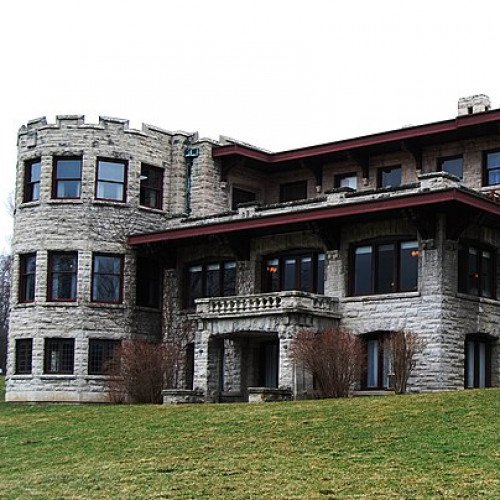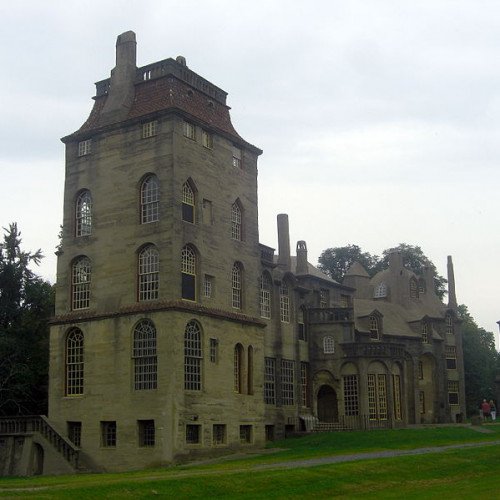Castles of "United States" FAIR LANE vs FONTHILL

FAIR LANE
Fair Lane was the estate of Ford Motor Company founder Henry Ford and his wife, Clara Ford, in Dearborn, Michigan, in the United States. It was named after an area in Cork in Ireland where Ford's adoptive grandfather, Patrick Ahern, was born. The 1,300-acre (530 ha) estate along the River Rouge included a large limestone house, an electrical power plant on the dammed river, a greenhouse, a boathouse, riding stables, a children's playhouse, a treehouse and extensive landmark gardens designed by Chicago landscape architect Jens Jensen. The residence and part of the estate grounds are open to the public as a historical landscape and house museum and preserved as a National Historic Landmark. Part of the estate grounds are preserved as a university nature study area. The estate was donated to the University of Michigan in 1957 for a new Dearborn campus. The staff's former houses and a pony barn are used by the University of Michigan–Dearborn. The main house, powerhouse, garage and 72 acres (0.29 km2) of land were operated as a museum, while a restaurant occupied the former indoor swimming pool natatorium until the University closed Fair Lane to the public in 2010. In 2013 the stewardship of the estate was transferred to the same non-profit group that operates the lakeside Edsel and Eleanor Ford House, with financial help from the Ford family.
Statistics for this Xoptio

FONTHILL
Fonthill, also known as Fonthill Castle, was the home of the American archeologist and tile maker Henry Chapman Mercer, in Doylestown, Pennsylvania. Despite sometimes being referred to as Fonthill Castle, it is a large house and not a castle. Fonthill Castle was the home of the archaeologist and tile maker Henry Chapman Mercer. Built between 1908 and 1912, it is an early example of poured-in-place concrete and features 44 rooms, over 200 windows, 18 fireplaces, 10 bathrooms and one powder room. The interior was originally painted in pastel colors, but age and sunlight have all but eradicated any hint of the former hues. One room in the Terrace Pavilion (built on the site of the former home's barn), has a restored paint job so visitors can view the home's former glory. The castle contains built-in furniture and is embellished with decorative tiles, made by Mercer at the height of the Arts and Crafts movement. The castle is filled with an extensive collection of ceramics embedded in the concrete of the house, as well as other artifacts from his world travels, including cuneiform tablets discovered in Mesopotamia dating back to over 2300 BCE. The home also contains around 1,000 prints from Mercer's extensive collection, as well as over six thousand books, almost all of which were annotated by Mercer himself.